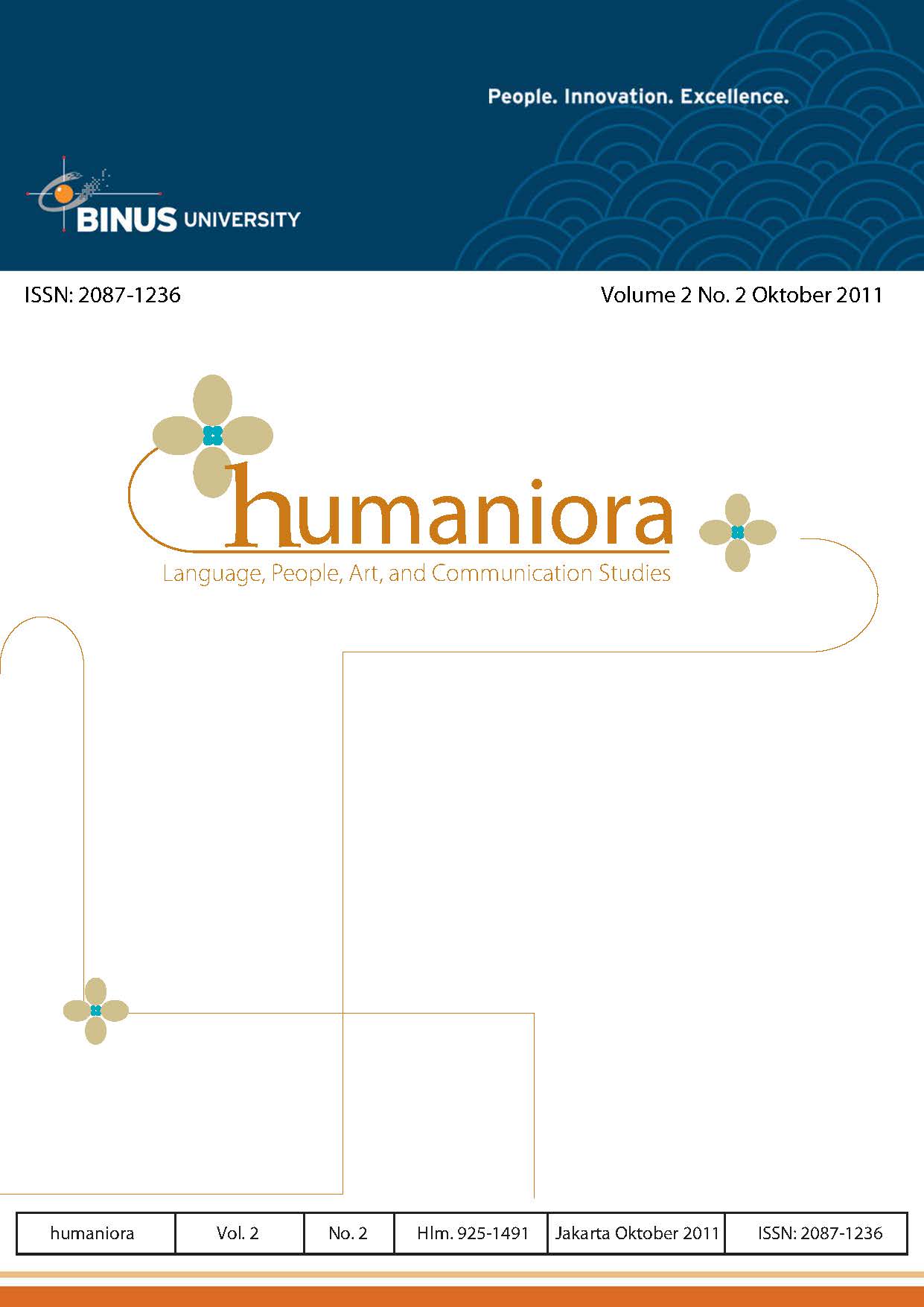Crime As Entertainment or Entertainment as A Crime?
DOI:
https://doi.org/10.21512/humaniora.v2i2.3151Keywords:
crime show, the CSI effect, cultivation theoryAbstract
Article presents one part of pop culture is crime portrayed as entertainment in television shows. Television has the means of information and entertainment, resulting in the shift of crime shows, initially crime was portrayed in the news but due to the high popularity, it becomes part of the entertainment as well. In terms of information, the most famous of crime drama show is Crime Scene Investigation (CSI), and this show gave effect known as the CSI effect, which is people have more appreciation to scientific evidences and DNA testing in trials. On the other hand, with so many shows involving crime resulting in cultivation impact, which is accumulation and the formation of perception of reality. People who are more exposed to this crime show will form the same perception as the one depicted by television and resulted to changes in their behavior. Several proposals to reduce this negative effects are audience learning, the use of rating system and electronic key in television set.
Â
References
Baran, S. J. (2010). Introduction to mass communication. New York: McGraw-Hill.
Baskin, D. R., & Sommers, I. B. (2010). Crime-show-viewing habits and public attitudes toward forensic evidence: The "CSI effect" revisited. Justice System Journal, 97.
Bjornstorm, E. E., Kaufman, R. L., Peterson, R. D., & Slater, M. D. (2010). Race and Ethnic Representations of Lawbreakers and Victims in Crime News: A National Study of Television Coverage. Social Problems, 269-293.
Browne, R. B. (2000). American studies and popular culture. Popular Culture Studies Across the Curriculum, 17.
Brummet, B. (1994). Rhetoric in popular culture. St Martin's Press.
Centerwall, B. S. (1993). Television and violent crime. Public Interest, 56.
Dowler, K., Fleming, T., & Muzzatti, S. L. (2006). Constructing crime: Media, crime, and popular culture. Canadian Journal of Criminology and Criminal Justice, 837.
Fay, B. W. (1995). Running scared. Marketing Research, 40.
Kim, J. K. (2007). US crime drama show and the cultivation effect. International Communication Association. San Fransisco.
Martin, J. N., & Nakayama, T. K. (2007). Intercultural communication in contexts. McGraw-Hill.
Miller, K. (2005). Communications theories: Perspectives, processes, and contexts. New York: McGraw-Hill.
Nickoli, A. M., Hendricks, C., Hendricks, J. E., & Osgood, E. (2003). Pop culture, crime and pedagogy. Journal of Criminal Justice Education, 149.
Ray, K. (2007). Domesticating cuisine food and aesthetics on American television. Gastronomica: The Journal of Food and Culture, 50-63.
Vidyarini, T. N. (2008). Budaya populer dalam kemasan program televisi. Jurnal Ilmiah Scriptura, 2, 29-37.
Downloads
Published
How to Cite
Issue
Section
License
Authors who publish with this journal agree to the following terms:
a. Authors retain copyright and grant the journal right of first publication with the work simultaneously licensed under a Creative Commons Attribution License - Share Alike that allows others to share the work with an acknowledgment of the work's authorship and initial publication in this journal.
b. Authors are able to enter into separate, additional contractual arrangements for the non-exclusive distribution of the journal's published version of the work (e.g., post it to an institutional repository or publish it in a book), with an acknowledgment of its initial publication in this journal.
c. Authors are permitted and encouraged to post their work online (e.g., in institutional repositories or on their website) prior to and during the submission process, as it can lead to productive exchanges, as well as earlier and greater citation of published work.
USER RIGHTS
All articles published Open Access will be immediately and permanently free for everyone to read and download. We are continuously working with our author communities to select the best choice of license options, currently being defined for this journal as follows: Creative Commons Attribution-Share Alike (CC BY-SA)




















